Text
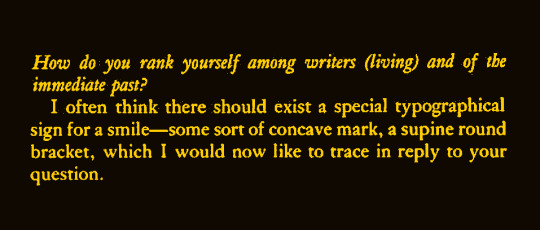
Fun fact ͜ Vladimir Nabokov was the first to snub a stupid question with the concept of a typographical smile in 1969, for a piece by Alden Whitman in The New York Times.
Then, thirteen years later (not so fun fact), the smiley face was born into the following chauvinistic patriarchy/rising incel and misogynist rabbit hole: “If you turn your head sideways to look at the three characters :-) they look sort of like a smiling face. Thus, if someone sends you a message that says "Have you stopped beating your wife? :-)" you know they are joking” or “o>-<|= for messages of interest to women.” In Original Bboard Thread in which :-) was proposed (September, 1982)
0 notes
Text
The Situationists’ wilder projects for détournement never took off. In Potlatch, there had been any number of visionary proposals: the Metro should be running all night, special aerial runways should be constructed to facilitate journeys across the rooftops, churches should be turned into children’s playgrounds (or Chambers of Horror), railway stations should be left exactly as they are—except that all timetables and travel information should be removed from them. Graveyards should be abolished. Prisons should be opened. Street-names should be changed. All museums should be closed and the art works distributed, to be hung in bars and Arab cafés.
Peter Wollen, «12» in Situationists and Architecture, 2001
0 notes
Text

Anthony Hernandez, Forever #36 (2009)
Even the word homeless, as a noun, is recent. The Homeless, neither voters nor consumers, disenfranchised and without economic subjecthood, have rather suddenly become a permanent fixture in America’s ossifying caste system. Like Iraqi civilian casualties in the Gulf War, their precise number is elusive. Let’s say they are many. Very many. That term, “The Homeless,” as if they were an organized group, a group with rights, a group you belonged to. If one weren’t implicated in the commonplaceness of their existence, that is, if the homeless weren’t such a present feature on the social horizon, one might find the distance to inquire as to why such a class exists at all in the United States. One might ask what sort of poor, shitty country it is that has so little self-respect as to allow its citizens to sleep in doorways and beg for food. Questions like this don’t get you very far. It’s a matter of priorities. That’s how it is. It’s a free country. Both the rich and the poor have the right to sleep under bridges. Why don’t they just go away? They’re already away. They’re “home.” They’ve been “evicted,” a word which, unlike “homeless,” speaks volumes.
Anthony Hernandez and Lewis Baltz, «Forever Homeless: A Dialogue» in Landscapes for the Homeless, 1995 (Sprengel Museum Hannover)—the bold italics indicate Hernandez’s voice as it appears in the publication.
Forever comprises photographs taken in the downtown area of Los Angeles and the poorer neighbourhoods of Compton, Watts and South Central, made between 2007–2012. The work traces the movements of the homeless, in images which take up the point of view of the homeless person.
The title was drawn from a previous work Landscapes for the Homeless (1995), exhibited at the Sprengel Museum in Hanover. The catalogue included a conversation between Hernandez and Lewis Baltz titled Forever Homeless: A Dialogue. It was Baltz who chose the title, and Hernandez speaks of its prevailing significance, “The title is very important because, as I write this, fifteen years on, the homeless population of Los Angeles has only increased; I could technically keep photographing this subject, making these kinds of pictures, forever.”
0 notes
Text





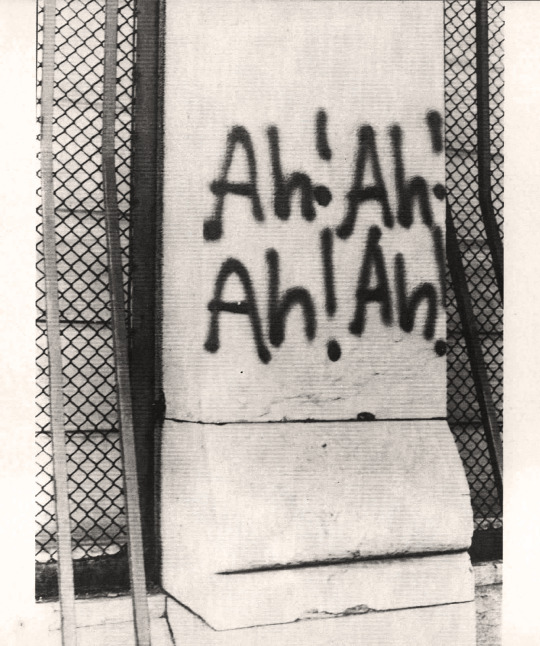


IV.) As Paredes em Liberdade, 1974 (Fotografias: José Marques, Maquete: Fernando Felgueiras e Amélia Afonso, Editorial Teorema)
1 note
·
View note
Text
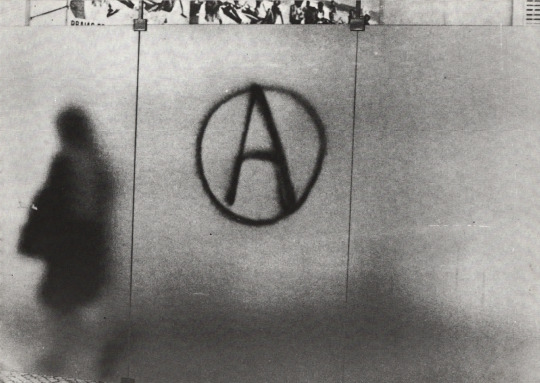
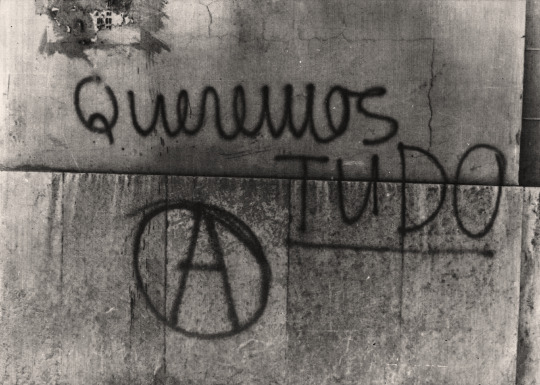
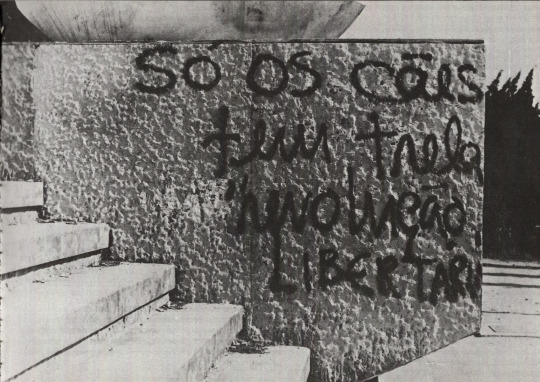
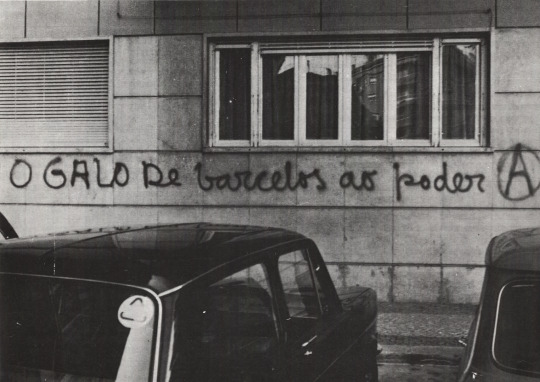
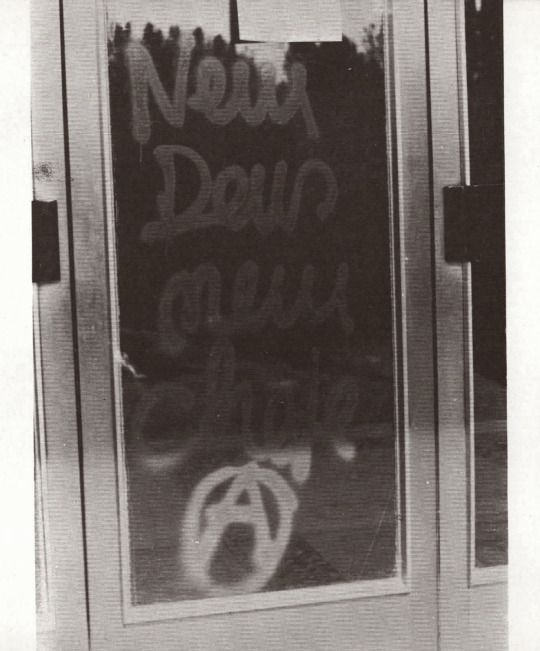
III.) As Paredes em Liberdade, 1974 (Fotografias: José Marques, Maquete: Fernando Felgueiras e Amélia Afonso, Editorial Teorema)
0 notes
Text
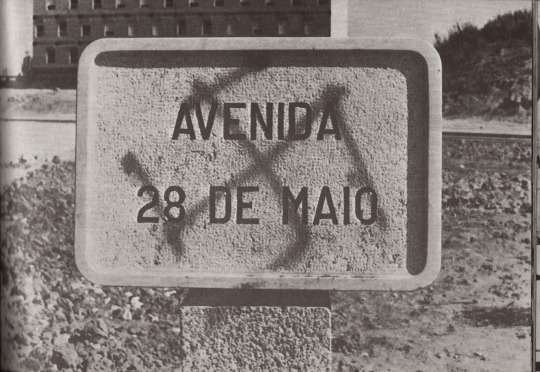
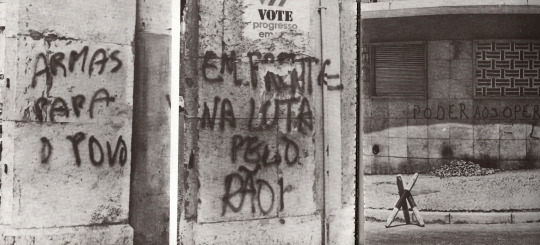
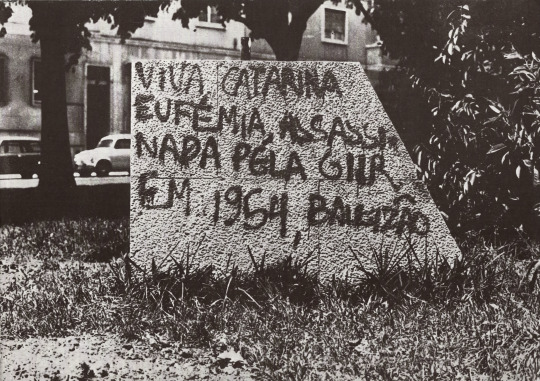



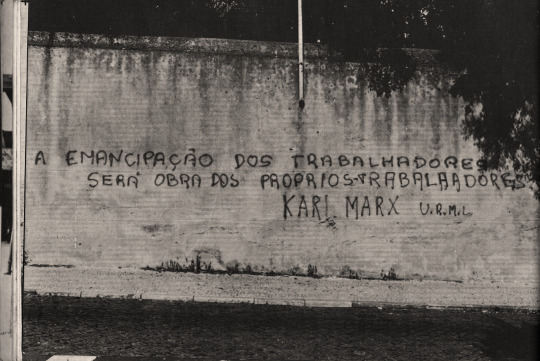



II.) As Paredes em Liberdade, 1974 (Fotografias: José Marques, Maquete: Fernando Felgueiras e Amélia Afonso, Editorial Teorema)
0 notes
Text


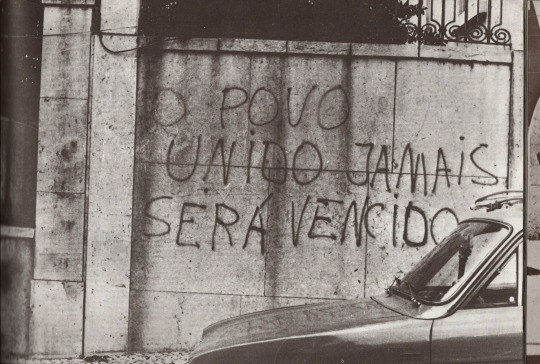
I.) As Paredes em Liberdade, 1974 (Fotografias: José Marques, Maquete: Fernando Felgueiras e Amélia Afonso, Editorial Teorema)
“Ao longo de 48 anos, as paredes e os muros fizeram parte da imprensa clandestina portuguesa. Na calada da noite, arriscando a integridade física, mãos anónimas redigiam apressadamente a palavra de ordem, a crítica, o ataque antifascista.
Foi assim que as nossas paredes e os nossos muros passaram a ser um reflexo vivo da nossa consciência política, do nosso inconformismo, da nossa ânsia de liberdade em plena opressão.
Com o 25 de Abril, já conquistada a liberdade, as inscrições murais multiplicaram-se, verificando-se uma extrema diversidade de directrizes e de opiniões. Dir-se-ia até que a imprensa mural, por esse Portugal fora, se revitalizou intensamente, reflectindo uma pluralidade de pensamento só exprimível abertamente em democracia.
As inscrições recolhidas neste livro foram fotografadas, em Maio/Junho de 1974, em Lisboa. Muitas delas espalharam-se por todo o País, atingindo assim repercussão nacional.
Ao fazer tal recolha, houve a preocupação de nada ocultar e de proporcionar a mais ampla visão de tais inscrições. Elas aí ficam com o seu lirismo, a sua agressividade, a sua esperança, a sua ingenuidade, o seu ódio, o seu humor, a sua firmeza revolucionária.”
0 notes
Text

Audio CD containing unheard and unpublished sound fragments from Dirk Schaefer’s score for Matthias Müller’s Locomotive (purrrrrj032-special, 2023)
1 note
·
View note
Text
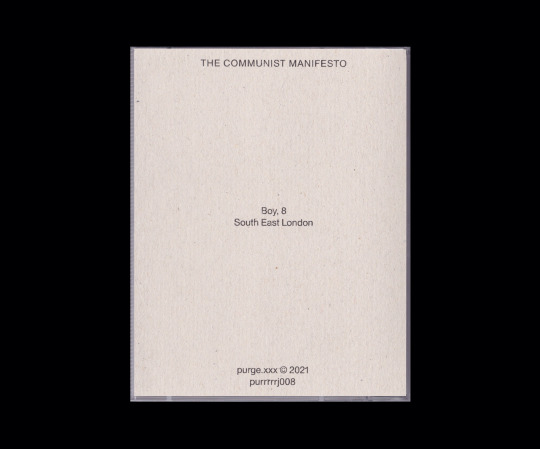
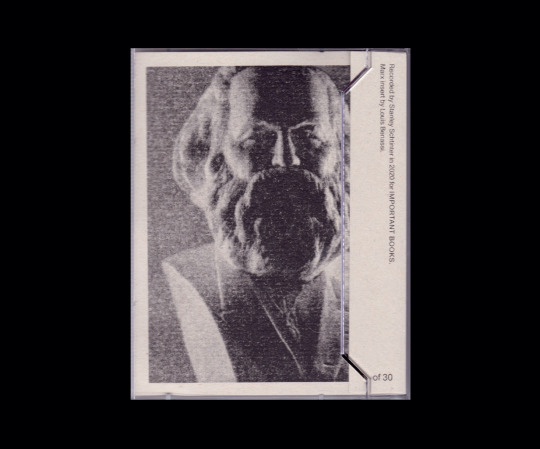
DOUBLE K7 15€ OUT OF STOCK — The Communist Manifesto read in full by an 8-year-old boy from South East London (purrrrrj008, 2021)
0 notes
Text
AGAINST LISTS by Elena Gorfinkel
Lists of films will not save you.
Lists of films will not save films.
Lists of films will not reorganise how films gain and lose value.
Lists will not preserve all those thousands and thousands of films decomposing in alleys, basements, storage lockers: films lost, unseen, and unpreserved.
Lists of films will not write new film histories.
Lists are not neutral or innocent or purely subjective.
Lists do not enshrine your hallowed taste, they only dilute it.
Lists are attentional real estate for the fatigued, enervated, click-hungry.
[...]
Burn the list to free your ass.
[...]
Lists are for laundry, not for film.
3 notes
·
View notes
Photo
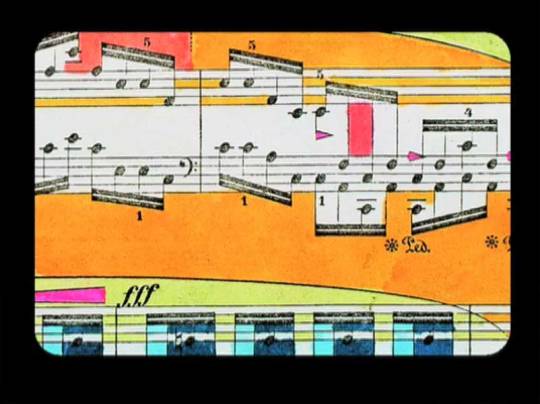



Paul Sharits, chromatic drawings after Chopin’s opus 68.
23 notes
·
View notes
Text
A antropofagia ritual é assimilada por Homero entre os gregos e segundo a documentação do escritor argentino Blanco Villalta, foi encontrada na América entre os povos que haviam atingido uma elevada cultura — Asteca, Maias, Incas. Na expressão de Colombo, comian los hombres. Não o faziam porém, por gula ou por fome. Tratava-se de um rito que, encontrado também nas outras partes do globo, dá a idéia de exprimir um modo de pensar, uma visão do mundo, que caracterizou certa fase primitiva de toda a humanidade. Considerada assim, como weltanschauung, mal se presta à interpretação materialista e imoral que dela fizeram os jesuítas e colonizadores. Antes pertence como ato religioso ao rico mundo espiritual do homem primitivo. Contrapõe-se, em seu sentido harmônico e comunial, ao canibalismo que vem a ser a antropofagia por gula e também a antropofagia por fome, conhecida através da crônica das cidades sitiadas e dos viajantes perdidos. A operação metafísica que se liga ao rito antropofágico é a da transformação do tabu em totem. Do valor oposto, ao valor favorável. A vida é devoração pura. Nesse devorar que ameaça a cada minuto a existência humana, cabe ao homem totemizar o tabu.
Oswald de Andrade sobre a distinção entre a antropofagia ritual do mero canibalismo (antropofagia por gula ou fome), em A Crise da Filosofia Messiânica (1950), pós-Manifesto Antropófago (1928).
0 notes
Text
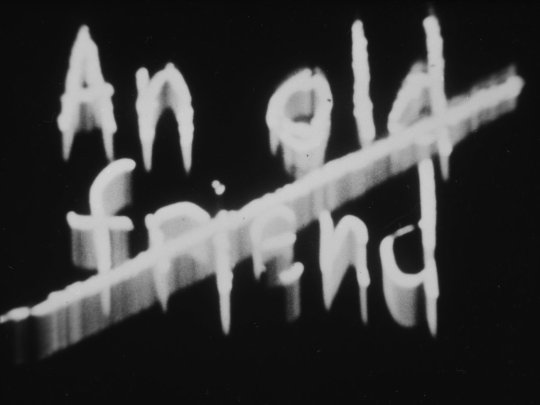
Su Friedrich, GENTLY DOWN THE STREAM, 1981 (16mm, b&w, silent, 13’)
4 notes
·
View notes
Text
A friend was doing some painting for the ruler of Ch’i.
‘What are the most difficult things to paint?’
‘Dogs and horses.’
‘And what are the easiest?’
‘Ghosts and demons. One recognizes dogs and horses for one sees them every day and it is difficult to make them seem like real ones. Nobody has seen ghosts or demons and therefore it is easy.’
Han Fei (?–234 BCE), ‘Easy to Paint’ in The Chinese Theory of Art: Translations from the Masters of Chinese Art by Lin Yutang, 1967, p.23-24 [revised]
0 notes
Text
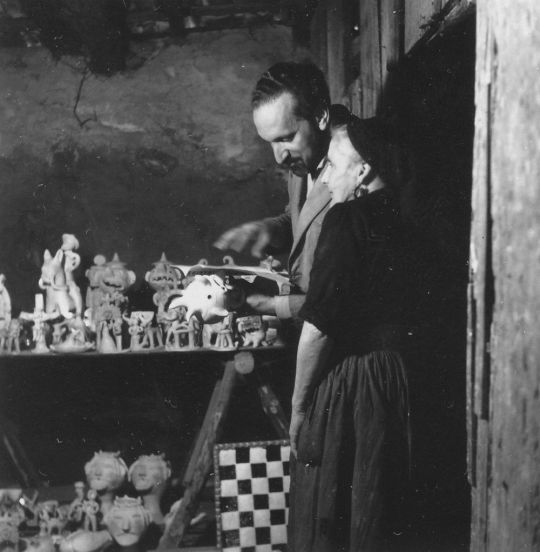
Rosa Ramalho na sua oficina com Ernesto de Sousa, em S. Martinho de Galegos (Barcelos, Portugal), c. 1964. Preparação para a exposição “Quatro Artistas Populares do Norte: Barristas e Imaginários” com obras de Rosa Ramalho, Mistério, Quintino Vilas Boas Neto e Franklin Vilas Boas, na Galeria Divulgação, em Lisboa, 1964. Foto da Cronologia de Ernesto de Sousa.
O xadrez [...] não é um jogo que Rosa Ramalho jogasse ou conhecesse. O jogo de xadrez que existe nesta coleção será seguramente uma encomenda feita pelo colecionador, que era xadrezista. [...] As peças do jogo de xadrez de Rosa Ramalho foram as únicas peças que o colecionador possuía e usava no seu quotidiano. São várias as peças de xadrez, num total de 59 peças, sendo que só existe um jogo de xadrez quase completo (faltam dois peões pretos) e não existe nenhum tabuleiro.
No entanto, conhecemos mais do que um tabuleiro de xadrez, sendo que no espólio de Ernesto de Sousa se encontra uma fotografia, tirada na oficina de Rosa Ramalho, onde se pode observar os dois em diálogo, sendo que no chão, pousado ao alto, se encontra um tabuleiro de xadrez.
Chess [...] is not a game that Rosa Ramalho either played or knew anything about. The game of chess that belongs to this collection was certainly commissioned by the collector himself, who was a chess player. [...] The pieces of Rosa Ramalho’s chess game were the only pieces that the collector owned and used in his daily life. There are various chess pieces in the collection, amounting to 59 in total, although there is only one (almost) complete chess set (there are two black pawns missing) and there is no chessboard.
However, we know of the existence of more than one chessboard: among Ernesto de Sousa’s personal papers, there is a photograph, taken at Rosa Ramalho’s workshop, in which we can see the two of them in conversation, while, placed high between them on the floor is a chessboard.
“Xadrez/Chess” in Rosa Ramalho: As Escolhas de um Colecionador [A Collector’s Choice]. Catálogo de exposição no Palácio da Cidadela de Cascais. Curadoria e textos de Isabel Maria Fernandes. Ed. Fundação D. Luís I, 2023.
5 notes
·
View notes

